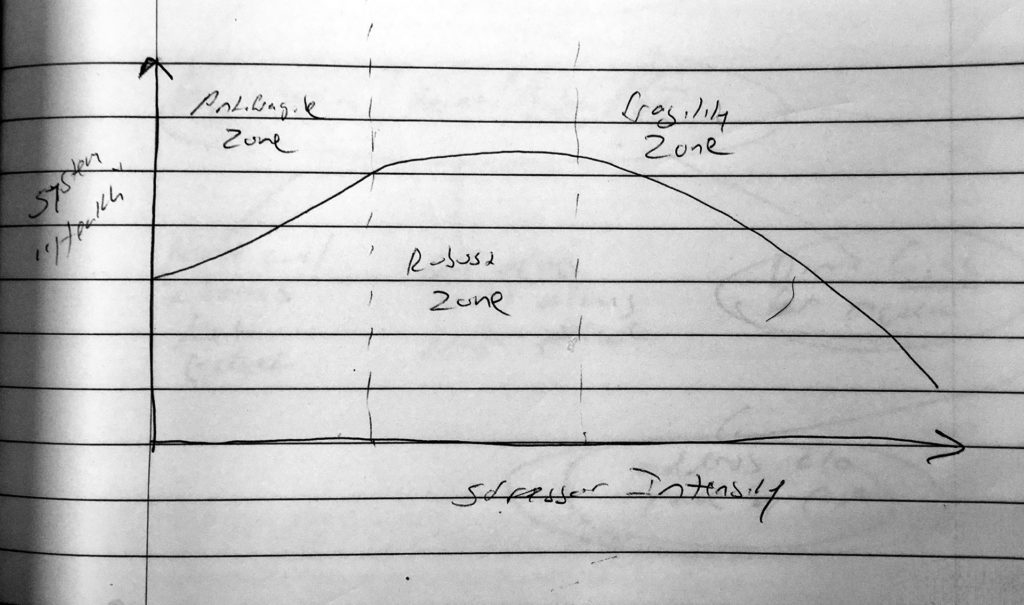A Genuine Twynthesis Book Report!
I came across Nassim Nicholas Taleb a few months ago. He’s written several books now, including Black Swan and Skin in the Game. My entry-point for his works was Antifragile, which explores the effect(s) perturbations have on systems, and more specifically those systems that actually gain function as a result of a perturbation. He calls this gain of function an antifragile response, as opposed to a fragile response, where the system loses function as a result of the perturbation; or a robust response, where the system simply resists a change of function from the perturbation.
Once you get the notion of antifragility into your head and go looking for it, it starts to crop up everywhere. Taleb mentions weight lifting – you have to slightly damage the muscles to stimulate hypertrophy. Grassland ecosystems are another example – they need regular grazing to stay healthy. You might have noticed with both of these examples that, beyond a certain point, what used to stimulate system health becomes detrimental. There is a such thing as too much weight, too much grazing. That tipping point is what I call the Antifragility Limit. Stressor intensities below that limit are in what I call the Antifragile/Hormetic Zone.
With this handy mental tool one can start asking questions like “does system X have an Antifragile Zone (AZ) relative to stressor Y?” and I for one started looking at the world differently as a result. Taleb points out that cars do not have an AZ relative to crashes – there is no speed at which hitting an object actually strengthens the car. Similarly, to my knowledge there is no AF for, say, smoking – no dose of cigarettes that is better for the body than having none. There is an AF for sunlight exposure, but it varies by skin tone and location.
Beyond the Antifragility Limit, the system response can level off (its Robust Zone) and/or drop off (the Fragile Zone). Rule of thumb: I think there is a Fragile zone for every system relative to any stressor, but AZ’s and RZ’s are not necessary features.
Here’s a concept graph:

So far this discussion has been first-order and linear. Taleb walked down the road farther and made the point that living systems change to adapt to stressors that affect them often, to the best of their ability. The more novel the stressor, the less competent the life system is to handle it. Life systems are constantly adapting to a changing environment, so a stressor can fall in or out of their “zone of competence” depending simply upon how often they are exposed to that stressor. Presumably to conserve energy, systems “forget.” This behavior underlies atrophy and “use it or lose it.” Life can become fragile to stressors it hasn’t seen for awhile.
What’s the application? In a nutshell, if you want to cultivate your own antifragility: have varied experiences, work consistently at your specializations, limit stressors with no AZ, stay within the AZ for stressors that have one. And, whenever you can, choose to have an antifragile response to a stressor rather than a fragile one. This skill can be cultivated. As I write this, Taleb’s ideas are changing the way I deal with conflict and other life challenges.
I have pulled at one thread from Antifragile because it’s the one I’m most interested in, and elaborated on it; the book contains several more! I definitely recommend reading it. Tip: you will encounter Taleb’s personality often, and he seems to be a genuine fan of his mind 😉 Stay focused on his ideas and you’ll do fine.
-S

